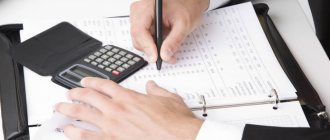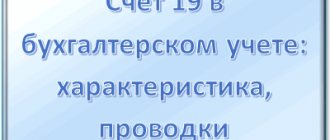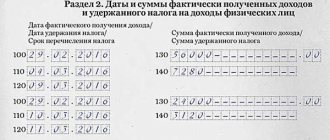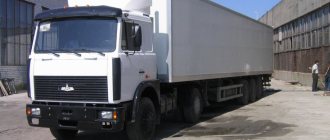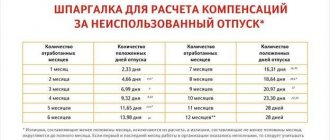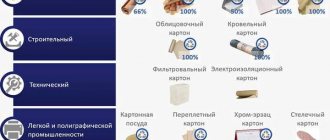Must pay
According to the current provisions of fiscal legislation, VAT payers are all organizations and individual entrepreneurs that apply the general taxation system. Consequently, if an economic entity pays income tax, then it will have to pay value added tax to the Federal Tax Service.
Please note that the legal form of the economic entity does not matter. The following are required to pay the fee: LLCs, NPOs, public sector employees (from entrepreneurial activities on OSNO), and individual entrepreneurs. The only condition is the general taxation regime and the absence of legally formalized rights to exemption from payment of the encumbrance.
It is worth noting that this is not only about Russian organizations. Foreign companies operating in our country are also required to calculate and pay this fee.
Let us repeat that state and municipal institutions that use OSNO are also considered VAT payers. However, only income-generating activities are considered taxable. VAT is not calculated on activities financed through budget subsidies, grants and investments.
Tax benefits
Officials have provided a number of benefits for VAT payers. In simple words, this is a list of transactions that are exempt from value added tax (Article 149 of the Tax Code of the Russian Federation). These operations should include:
1. Benefits that can be applied to all categories of taxpayers:
- providing loans;
- provision of goods worth up to 100 rubles for advertising purposes;
- free transfer of goods, works, services within the framework of charity.
2. Transactions that are not recognized as subject to VAT taxation:
- the place of implementation of such an operation is not recognized as the territory of the Russian Federation (export);
- sale of land plots and shares in them;
- other operations specified in clause 2 of Art. 146 Tax Code of the Russian Federation;
- import of goods into the territory of the Russian Federation that are not subject to VAT, according to Art. 150, pp. 1.1 clause 1 art. 151 Tax Code of the Russian Federation.
3. Operations that can only be used by certain categories of taxpayers indicated in paragraph 1 of Art. 56 Tax Code of the Russian Federation:
- educational services of non-profit organizations and certain other operations;
- medical services, except cosmetic, veterinary, sanitary and epidemiological;
- banking operations, except for operations related to collection activities;
- insurance activities of insurers carried out by non-state pension funds.
Please note that the taxpayer has the right to refuse some benefits. The refusal is legal only in relation to non-taxable transactions named in paragraph 3 of Article 149 of the Tax Code of the Russian Federation. To refuse, you must submit a corresponding application to the Federal Tax Service.
The amount of VAT calculated is transferred to the budget
Dear readers! The article talks about typical ways to resolve legal issues, but each case is individual. If you want to find out how to solve your particular problem , contact a consultant:
- if property rights are transferred;
- if there is income under an assignment agreement, commission or agency agreements;
- if transportation and international communication services are provided;
- if construction and installation work is carried out;
- if the company is being sold;
- if goods are imported into Russia;
- if the goods are sold in Russia by foreigners who act as taxpayers;
- if the company is being reorganized.
Methodology for calculating VAT to be transferred to the budget
Based on the initial data, calculate the amount of VAT when selling 1,200 products to customers at a selling price of 450 rubles, 30,000 products at a selling price of 500 rubles, 8,200 products with a full cost of 900 rubles, a profit of 30%.
Based on the initial data, calculate the amount of VAT payable to the budget: for the manufacture of products, raw materials were purchased for 123,490 rubles, materials for 834,200 rubles.
Suppliers' invoices are paid and material resources are used in production. Also during the reporting period, bills for energy resources amounted to RUB 45,600.
The production cost of products sold amounted to 2,002,400 rubles, commercial expenses 5%, profit 30%.
The procedure for transferring VAT to the budget
According to Art. 122 and art. 123 of the Tax Code of the Russian Federation, if, during an inspection, inspectors reveal non-payment of tax, the organization will have to pay a fine, and in some situations, employees of the enterprise may be held criminally liable.
- in field 101 Status of the person who issued the document - code 02 (tax agent);
- in field 104 KBK - VAT budget classification code;
- in field 106 Basis of payment - TP code (payment of the current year);
- in field 110 Payment type - tax code (payment of taxes and fees).
How to determine the amount of VAT payable to the budget
If the VAT (B) indicator is negative, then the amount that corresponds to it can be reimbursed from the budget. That is, return or offset when calculating VAT for the next reporting period (with the second option, the positive VAT (B) indicator for the reporting period can thus be reduced due to the negative VAT (B) for the previous reporting period).
For the purposes of the previous example, let's say that the invoice for the apples was lost. The accountant requested the original document from Fregat LLC and made sure that the invoice was sent by the counterparty.
Let’s assume that the deadline for filing a declaration is approaching the end, and Salut LLC wants to apply VAT on the apple transaction as a deduction.
The company's accountant does not know exactly what the VAT was initially, but, knowing the rate and amount of the transaction, he determines the tax to be deducted using the formula:
How to calculate VAT for payment to the budget
Advice : it is worth remembering that VAT can be reimbursed by the state if, at the end of the tax period, the amount of tax deductions exceeds the total amount of VAT. To receive a refund, you need to provide a tax return, a copy of the contract, bank statements on the flow of money when selling goods, copies of invoices, a goods acceptance certificate and a return application.
We calculate the amount of value added tax payable to the budget as follows. The cost of goods or services sold, including excise taxes, the amount of remuneration or the result of other transactions subject to taxation, but excluding VAT, is multiplied by 10 or 18%.
The interest rate is determined by art. 146 of the Tax Code and depends on the specifics of the organization’s work. This is how we get the tax amount. We subtract tax deductions from it (for example, VAT paid on business trip expenses, on purchased goods, etc.
) and only then do we receive the amount of VAT tax payable to the budget.
VAT transferred to the budget transaction
Dt sch. 30303830 (30305830) Set of accounts. 30304730 – VAT amounts for reimbursement are offset against the institution’s payments for other taxes (clauses 131-133 of Instruction No. 174n, Instruction to the Unified Chart of Accounts No. 157n (account 20101, 30300, off-balance sheet account 17)).
Thus, VAT must be accrued for payment to the budget either on the day of shipment (transfer) of goods (work, services), or on the day of their payment - depending on which of these events occurred earlier. For example, if a budget institution has shipped goods to a buyer, then it must charge VAT on this operation, even if payment has not been received from the buyer (clause 1 of Article 167 of the Tax Code of the Russian Federation).
How much VAT per month is transferred to the budget?
Payment of tax on transactions recognized as an object of taxation in accordance with subparagraphs 1 - 3 of paragraph 1 of Article 146 of this Code on the territory of the Russian Federation is made at the end of each tax period based on the actual sale (transfer) of goods (fulfillment, including for one’s own needs, works, provision, including for one’s own needs, services) for the expired tax period in equal shares no later than the 25th day of each of the three months following the expired tax period, unless otherwise provided by this chapter. Unless otherwise provided by subclause 1.1 of clause 1 of Article 151 of this Code, when importing goods into the territory of the Russian Federation and other territories under its jurisdiction, the amount of tax payable to the budget is paid in accordance with the customs legislation of the Customs Union and the legislation of the Russian Federation on customs affairs.
4); from 01.10.2011 buyers of property and (or) property rights of debtors declared bankrupt in accordance with the legislation of the Russian Federation (with the exception of individuals who are not individual entrepreneurs) (clause
VAT tax agent: calculation and payment of tax when money is transferred to a Russian company
At first glance, it seems that you need to start from the moment when the new Russian creditor (who bought property rights from a foreigner) transfers him money for this “purchase”. However, when this will happen and whether it will happen at all, you cannot know.
Moreover, you may have no idea at all that you now owe someone else. And, as a result, they themselves transfer money to the non-resident and at the same time VAT to the budget. By the way, in this case you will not violate anything and your obligation to the foreigner will be fulfilled.
But if you have received a notice of assignment of the claim, then two options are possible.
And whether the court will support you is unknown.
As a rule, as a basis for exemption from the obligation to withhold and remit VAT, tax agents cite the argument that they do not pay money to a foreigner.
But the judges formed a position only in relation to those situations where a non-resident receives income in kind. In our cases, the foreigner receives money, even from third parties.
Recommended reading: Rubber Flooring for Children's Playgrounds Kosgu
Country of Soviets
For correct calculations, the enterprise accountant needs to determine the amounts to be charged and deducted VAT. To avoid problems with controllers, you can entrust the calculation procedure to professionals specializing in VAT calculation.
On the eve of the next deadline for paying insurance premiums, tax officials decided to draw the attention of payers to the most common mistakes made when filling out payment orders for transferring contributions to the budget.
VAT on rental of municipal property
- Accurately and timely calculate and withhold tax amounts;
- Transfer the calculated tax amounts to the budget in full;
- Account for income paid to taxpayers, as well as keep records of accrued and transferred taxes;
- Timely submit reporting documentation to the control authorities reflecting the amounts of accrued and transferred taxes.
According to current legislation, the tax agent when concluding contractual relations for the lease of municipal property is the tenant. He must independently determine the amount of the taxable base for calculating VAT , calculate, withhold and transfer the amount of tax due to the budget.
How to calculate VAT payable to the budget
VAT chargeable is the amount of full tax that was previously paid by a particular company on their purchase of any product.
There is a certain form in which the required amount of tax to be deducted is determined.
It is as follows: Tax deduction = the cost of all purchased products without deducting the required tax (current tax rate / (1 + tax rate)).
As a rule, the accountant does not need to carry out this calculation at all, except perhaps to control incoming funds. The lists sent along with the products most often indicate the amount of tax to be deducted. However, it is still best to check such invoices immediately upon receipt, so as not to have problems in the future.
The rules for keeping by buyers and sellers of goods (work performed, services rendered) journals of received and issued invoices, purchase books and sales books, as well as the procedure for issuing invoices are determined by Decree of the Government of the Russian Federation dated December 2, 2000 No. 914 (subject to subsequent changes and additions).
When selling goods (work, services), transferring property rights on the territory of the Russian Federation, the taxpayer organization, in addition to the price of the goods (work, services) being sold, transferred property rights, is obliged to present the corresponding amount of VAT for payment to the buyer of these goods (work, services), property rights .
Interested in VAT transferred to the budget
A unitary enterprise operating in the housing and communal services sector adjusted its revenue from last year's sales upward in May 2021, and corrective invoices were issued to customers.
In such a situation, is it necessary to submit updated income tax returns for 2021 to the tax authority? How to explain why the data on income tax and VAT returns for the first quarter of 2021 do not match?
From July 1, lending rules are changing in Russia. This is stated in the Federal Law of December 27, 2021 N 554-FZ. For example, the interest rate on a consumer loan agreement cannot exceed 1 percent per day (currently 1.5 percent).
The seller must take into account the invoices that he himself issued to the buyer in the invoice journal. Although today this is a right, not an obligation.
But still, I recommend adhering to the old rules so that it is convenient to keep records, especially since this form has been preserved in many accounting programs. Next, it must be registered in the sales book.
Now this is an important tax document! Based on these documents, you will fill out a VAT return. It may also be required by tax authorities if necessary. Purchase book In turn, in order to be eligible for VAT deduction, you need an invoice received from the supplier.
Payment of VAT upon import must be confirmed by a document that records the payment of tax at customs. “Incoming” invoices are recorded in the invoices received journal and in the purchase ledger.
Subtracting the amount of “input” tax on purchases reflected in the purchase book from the amount of “output” tax recorded in the sales book is VAT, which must be paid to the budget on time.
Source: https://yur-grupp.ru/pereplanirovka/v-byudzhet-perechislyaetsya-summa-nds-rasschitannaya
VAT calculation: how to calculate VAT from the amount
If no violations are identified, then within 7 working days a decision is made on VAT reimbursement through offset or VAT refund. Based on the initial data, calculate the amount of VAT payable to the budget: for the manufacture of products, raw materials were purchased for 123,490 rubles, materials for 834,200 rubles.
Suppliers' invoices are paid and material resources are used in production. Also during the reporting period, bills for energy resources amounted to RUB 45,600. 2010 products “A” were sold at a price of 1,500 rubles. and transport services were provided in the amount of 12,400 rubles.
Torgovaya LLC entered into an agreement for the supply of goods with a representative office of a foreign organization located in Russia for the amount of USD 11,800 (including VAT - USD 1,800).
Register the business transactions of Marta LLC with accounting entries and generate the amount of VAT to be paid to the budget and for tax deduction. Which sections and lines of the VAT declaration should be filled in according to the above data?
How to extract VAT from the amount using an estimated rate
The amount of VAT payable to the budget for sales of goods (works, services), in respect of which taxation is determined at a tax rate of 0 percent, is determined at the end of each tax period as the amount of VAT reduced by the amount of the corresponding tax deductions. Christopher Columbus' main concerns in founding a colony on was that there would be hostile. Christopher Columbus' main concerns in founding a colony on was that there would be hostile. Christopher Columbus' main concerns in founding a colony on was that there would be hostile.
In accounting and tax accounting, revenue from sales under contracts denominated in foreign currency is defined as the sum of two quantities: the received advance and the receivables outstanding on the date of shipment.
The goods are sold to a representative office of a foreign organization located in Russia (payment for the goods is made in foreign currency).
Based on the initial data, calculate the amount of VAT when selling 1,200 products to customers at a selling price of 450 rubles, 30,000 products at a selling price of 500 rubles, 8,200 products with a full cost of 900 rubles, a profit of 30%.
Due to the fact that the contract provides for partial prepayment, and the organization makes the final payment after shipment, an exchange rate difference arises in accounting. It appears only in relation to the subsequent (second) part of the payment - USD 6,800 (including VAT - USD 1,037).
Reimbursement of VAT from the budget occurs if the accrued VAT, increased by the amount of the restored VAT, is less than the amount of VAT accepted for deduction.
Christopher Columbus' main concerns in founding a colony on was that there would be hostile. Christopher Columbus' main concerns in founding a colony on was that there would be hostile.
Christopher Columbus' main concerns in founding a colony on was that there would be hostile. Christopher Columbus' main concerns in founding a colony on was that there would be hostile.
Christopher Columbus' main concerns in founding a colony on was that there would be hostile.
The VAT tax rate is 0, 10 and 18%. There are also settlement rates - 10/110, 18/118. Such indicators are used if the operation reflected in clause 4 of Art. 164 Tax Code - if they receive an advance payment for goods, work or services.
If we are talking about the production of some work or the provision of some services, then all costs associated with production (for example, construction and installation work) are taken, your planned profit is added and also multiplied by the corresponding VAT rate.
If, according to clause 3 of Art. 160 of the Tax Code of the Russian Federation, the tax base is determined separately for each group of imported goods; for each of the specified tax bases, the amount of VAT is calculated separately, para. 1 clause 5 art. 166 Tax Code of the Russian Federation. In this case, the total amount of VAT is calculated as the amount obtained by adding the VAT amounts calculated separately for each of these tax bases.
In accordance with paragraphs. 4 p. 3 art. 39 of the Tax Code of the Russian Federation, the transfer of property is not recognized as the sale of goods, works or services if such transfer is of an investment nature. We are talking, for example, about a contribution to the authorized (share) capital of business companies and partnerships, a contribution under a simple partnership agreement, etc.
Thus, the founder’s transfer of funds to the authorized fund is not a sale and is not subject to VAT (Article 146 of the Tax Code of the Russian Federation). The calculation must be made based on the results of each tax period as the total amount of tax calculated from the tax base, reduced by the amount of tax deductions.
If the amount of deductions exceeds the total amount of tax, then the difference is subject to reimbursement to the taxpayer from the budget after conducting an appropriate desk audit by the tax authority.
The amount of tax payable to the budget by tax agents is determined as the amount of tax indicated in the invoice, calculated and paid in full.
Register business transactions with accounting entries, generate the amount of tax to be paid to the budget and for tax deduction for February and March 2006. Which sections and lines of the VAT declaration should be filled in according to the above data?
Calculate selling and retail prices for a set of furniture under the following conditions: the total cost of the set is 23,500 rubles, profit is 25%, trade markup is 15%.
Determining the amount of VAT payable
The calculation of the amount of VAT payable to the budget is carried out by taxpayers, taking into account the possibility of applying the rights to tax deductions and obligations to charge VAT on taxable items and restore VAT. How to correctly calculate the amount of VAT that needs to be paid to the budget, including using estimated rates, as well as taking into account deductions - more on this below.
The fact that a tax liability has arisen exists, so it does not matter how the company receives payment (cash or bill of exchange).
Tax refunds can be made by the tax authority in the form of a credit or refund in the manner prescribed by Art. 176 of the Tax Code of the Russian Federation.
The organization acts as a tax agent
The fact is that VAT is an indirect tax that is actually paid by the buyer. And the seller transfers this amount to the budget. But the seller has the opportunity to pay to the budget not the entire amount that he presents to the buyer, but to reduce it by the amount of input VAT, that is, by the amount of VAT that is included in the price of your suppliers - see examples.
below. Payment of VAT by persons specified in clause 5 of Art. 173 of the Tax Code of the Russian Federation, is carried out at the end of each tax period based on the corresponding sale of goods (work, services) for the expired tax period no later than the 20th day of the month following the expired tax period.
Based on the initial data, calculate the amount of VAT payable to the budget: for the manufacture of products, raw materials were purchased for 123,490 rubles, materials for 834,200 rubles. Suppliers' invoices are paid and material resources are used in production. Also during the reporting period, bills for energy resources amounted to RUB 45,600.
The production cost of products sold amounted to 2,002,400 rubles, commercial expenses 5%, profit 30%.
In order to deduct VAT on purchased materials, they must be taken into account and this fact must be documented (paragraph 2, paragraph 1, article 172 of the Tax Code of the Russian Federation).
Situation: how to calculate VAT when selling goods in Russia whose value is expressed in foreign currency?
Christopher Columbus' main concerns in founding a colony on was that there would be hostile. Christopher Columbus' main concerns in founding a colony on was that there would be hostile.
Christopher Columbus' main concerns in founding a colony on was that there would be hostile. Christopher Columbus' main concerns in founding a colony on was that there would be hostile.
If we are talking about an excisable product (for example, alcohol), then the tax base also includes the amount of excise duty. When a 0% rate is applied, there is therefore no need to calculate VAT.
All other goods and services are subject to VAT at a rate of 18%. The tax base is established as the cost of the goods or works sold, taking into account excise taxes for excisable products (Article 154 of the Tax Code).
Source: https://paper-pro.ru/ugolovnoe-pravo/2197-v-byudzhet-perechislyaetsya-summa-nds-rasschitannaya.html
Accounting for VAT on advance payments
The seller, having received an advance payment (partially or for the entire amount of the contract), in accordance with Article 168, paragraph 3 of the Tax Code of the Russian Federation, must draw up and issue an invoice to the customer within 5 calendar days after transfer of the advance payment.
The letter of the Ministry of Finance of the Russian Federation “On the application of tax deductions for advance payments” No. 03-07-15/39 explains that an invoice may not be sent if the supplier fulfilled its obligations before 5 days have passed since the advance payment was received .
2. It is not obligatory to pay VAT on advances credited towards the subsequent supply of services, goods or production of work, for which the manufacturing production cycle lasts longer than six months (according to the list approved by Decree of the Government of the Russian Federation of July 28, 2006 No. 468) (Article 154, paragraph 1, paragraph 3; article 167, paragraph 13 of the Tax Code of the Russian Federation).
Determine: 1) whether the plant is an excise tax payer, if so, then 2) the tax base and the amount of accrued excise duty; 3) is it possible to use deductions for this tax, if so, for what amounts? 4) the amount of excise tax to be paid to the budget by the deadline, the payment deadline; 5) is the excise tax payer the retail store that purchased and sold this beer?
The organization decides to switch to the simplified tax system from January 1 of next year. At the same time, at the end of December, its balance sheet included property on which VAT was accepted for deduction in previous tax periods: fixed assets, the initial cost of which was 500,000 rubles, the residual value of 400,000 rubles. Also on the balance sheet are materials worth 180,000 rubles.
From October to December, products of our own production were sold in the amount of 1,947,000 rubles, incl. VAT 297,000 rubles, material assets and production services were also purchased in the amount of 944,000 rubles, incl. VAT 144,000 rubles, part of these materials (as mentioned above), in the amount of 180,000 rubles.
excluding VAT, remained unused at the end of December.
Interesting: At what age can you buy non-alcoholic energy drinks?
Practice report: Organization of accounting of settlements with the budget and extra-budgetary funds
CJSC PTK "Vladspetsstroy" uses a linear-step management structure (Appendix 1). During its short existence, the organization has produced products worth many millions of rubles and is not losing ground.
An analysis of the main economic indicators, carried out according to the financial statements, showed that over the past three years, sales revenue and costs have increased every year.
In 2009, CJSC PTK Vladspetsstroy doubled its revenue from sales of manufactured products, and production costs also doubled accordingly. Selling expenses have been reduced. In 2009, CJSC PTK Vladspetsstroy paid a considerable amount of funds for the funds provided to the organization for use.
The overall financial result for the reporting year doubled and amounted to 15,090 thousand rubles. Net profit also almost doubled or by 10,090 thousand rubles. The company is actively conducting its business activities, taking out loans, increasing inventories, increasing the output of finished products, which of course affects its financial condition.
The mission of CJSC PTK "Vladspetsstroy" is formulated as follows: "Production taking into account all the wishes of the customer." Currently, CJSC PTK “Vladspetsstroy” rightfully considers the economic goal as the general goal, that is, obtaining the estimated amount of profit from the production of work and products.
The economic definition of tax can be formulated as follows.
A tax is a form of alienation of resources of individuals and legal entities on the basis of obligation, individual gratuitousness, irrevocability, ensured by state coercion, not in the nature of punishment or indemnity, in order to ensure the solvency of public authorities.
Taxes are a creation of the state, and in this capacity they have existed and can, in principle, exist outside of commodity-money relations.
However, modern legislation has distanced itself from all “non-monetary” forms of resource redistribution, therefore there is the following “legal” definition of tax, enshrined in part one of the Tax Code of the Russian Federation [1].
Tax is a mandatory, individually gratuitous payment levied on organizations and individuals in the form of alienation of funds belonging to them by right of ownership, economic management or operational management, for the purpose of financial support for the activities of the state and (or) municipalities (Article 8 of Part I of the Tax Code RF) [1]. Currently, the tax system of the Russian Federation also provides for such an economic category as “fee”. The main difference between a fee and a tax is that a tax is levied on the basis of the principle of individual gratuitousness, while payment of a fee implies, under certain conditions, some compensation.
Accounting entries for VAT accounting (with examples)
What is value added tax and why is it needed? We looked into it here. In this article, we will look at how VAT is accounted for in accounting and what transactions are reflected in accounting. Also here you will find an example of accounting for tax on purchased and sold goods with transactions (calculation and reimbursement of value added tax).
The total amount that must be paid to the budget is determined as the difference between the credit and debit of the account. 68.
If the loan turnover is greater than the debit turnover, then the organization must pay value added tax to the budget; if the loan turnover is less than the debit turnover, then the state remains indebted to the organization.
Read about how to calculate and how to separate value added tax from the amount in the previous article.
How to fill out a cash flow statement: example of filling out, procedure for filling out, rules, instructions
Within a year, the organization sold the machine and the building. The proceeds from the transaction amounted to 1.18 million rubles. The securities of another organization worth 40 thousand rubles were also sold. These transactions are entered into the balance sheet by posting DT51 KT60 (76) for a total amount of 1.22 million rubles. In the report, these transactions are reflected on line 4211 (for the amount of sold fixed assets excluding VAT) and 4222.
One of the accounting standards that is submitted annually is the cash flow statement. This document reflects data on the availability of money and their equivalents, their sources and areas of use. Let's take a closer look at how to fill out a cash flow statement.
How to calculate the amount of VAT payable
As a rule, an organization pays for property acquired in Russia (work, services, property rights) in rubles. This is due to the fact that it is prohibited to use foreign currency in payments, except in cases provided for by law (clause
3 tbsp. 317 of the Civil Code of the Russian Federation). Such cases, in particular, include the acquisition of property (works, services, property rights) from a representative office of a foreign organization located in Russia (subclause 7, paragraph 1, article 1, article 6 of the Law of December 10, 2003 No. 173- Federal Law).
Organizations engaged in the extraction of precious metals apply a zero VAT rate when selling these precious metals (subclause 6, clause 1, article 164 of the Tax Code of the Russian Federation).
At the same time, to confirm the right to apply the zero rate and VAT deductions, the organization must submit to the tax inspectorate a contract for the sale of precious metals and documents confirming the transfer of precious metals (clause 8 of Article 165 of the Tax Code of the Russian Federation). 03 Jul 2021 glavurist 380
Source: https://mainurist.ru/nalogovoe-pravo/v-byudzhet-perechislyaetsya-summa-nds-rasschitannaya
Don't have to pay
Legislators have designated a circle of persons who are exempt from calculating and paying value added tax. So, only two groups of economic entities are not recognized as VAT payers:
1. Organizations and entrepreneurs applying special tax regimes (STS, Unified Agricultural Tax, UTII, PNS). It is worth noting that the exemption applies only to those types of activities that are taxed under special regimes. For example, when combining the main taxation system and the special regime, a fee will have to be calculated. But only within the framework of activities taxable under OSNO.
IMPORTANT!
These conditions apply only to transactions carried out on the territory of the Russian Federation. If an economic entity imports goods, works, services from abroad, then it automatically becomes a VAT payer in relation to import transactions.
2. A number of economic entities whose activities are related to the preparation and holding of the FIFA World Cup (2018), as well as the Confederations Cup championship in 2021. Such provisions are outlined in Article 143 of the Tax Code of the Russian Federation.
Please note that for this category of subjects, exemptions apply to all types of transactions performed both on the territory of the Russian Federation and abroad.
Released, but must pay
Now we have figured out who pays and who is exempt from paying value added tax. It's quite simple. If you are an individual entrepreneur or an organization using OSNO, and your activities are not related to the preparation and holding of the World Cup, then you will have to pay a fee. It would seem that all other companies and merchants are exempt from paying the additional fee. But everything is not quite as we would like.
Officials determined that some entities who are not VAT payers are still required to pay tax, but under exceptional circumstances. It turns out that even the special regime does not provide a 100% guarantee of exemption from the “additional fee”. Let's determine what these circumstances are.
Mandatory payment of VAT is provided for the following cases:
- A company or individual entrepreneur carries out operations to import goods, works, and services.
- An economic entity is a tax agent for value added tax. Read more: “How a tax agent calculates and pays VAT.”
- The company, individual entrepreneur, issued an invoice to the buyer with the allocated tax amount.
- An organization or individual entrepreneur acts as a participant who conducts general affairs in a simple partnership.
- The entity acts as a concessionaire under a concession agreement or as a trustee under a property trust management agreement.
IMPORTANT!
If the subjects meet the above conditions, then they are automatically recognized as VAT payers.
Tax period codes for VAT
Information about the tax period must be reflected in the tax return. For ease of filling out and checking, some of the information in the document is presented in the form of a code system. In order to enter data on the VAT tax period into the report, the following codes are used for each tax period:
- Code No. 21 - for the first quarter;
- Code No. 22 - for the second quarter;
- Code No. 23 - for the third quarter;
- Code No. 24 - for the fourth quarter.
Thus, the tax period for VAT is a quarter. VAT is characterized by the coincidence of the tax and reporting periods.

